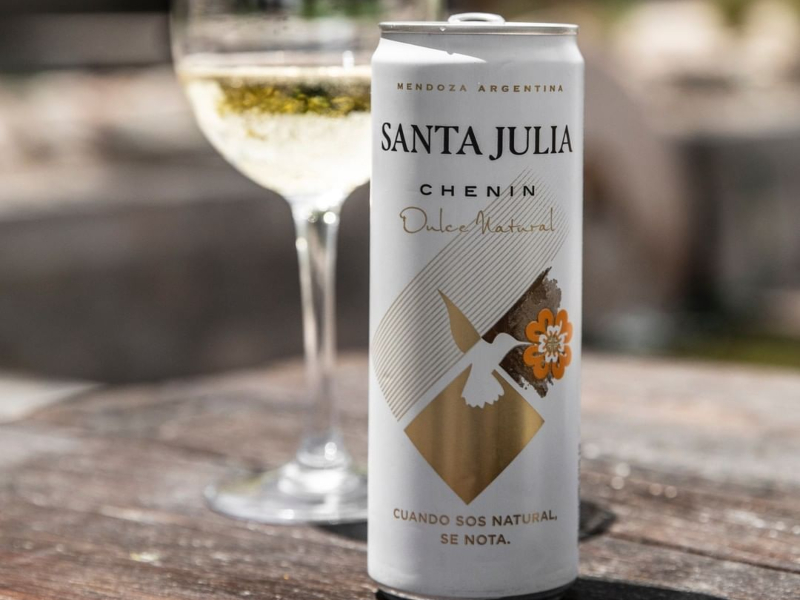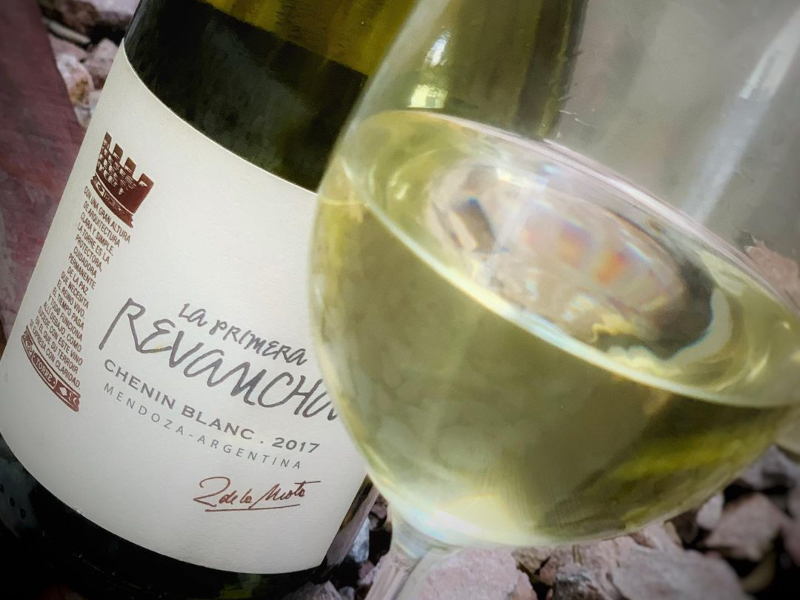For the past couple of decades, varieties such as Chardonnay, Torrontés and Sauvignon Blanc have dominated the white wine scene in Argentina. However, in recent years, other less well-known varieties have begun to re-emerge, some of which have a long history in Argentine viticulture.
The rise of Chenin Blanc
This is true of Chenin Blanc – whose international day is celebrated in June – which is generally used as a base for sparkling wines but can also be enjoyed as a still wine under labels such as D.V. Blanco Histórico, Santa Julia Dulce Natural, Críos and Riccitelli Old Vines. Sales have reflected the surge in interest, rising by 23.5% in Argentina between 2010 and 2021 according to data from the National Wine Institute (NIV).

“Chenin Blanc is a variety you don’t see very much, although it’s often used as a base for sparkling wines. It has been overlooked for still wines in the past because it needs to be handled very carefully in the vineyards due to its susceptibility to rot. However, it can produce extremely delicate wines,” says Juan Pablo Díaz, the oenologist at Bodegas López, who have historically used the variety for their Montchenot line.
The delicacy Díaz mentions is one of its attributes but another is its great versatility, capable of offering a range of different profiles that express their respective terroirs but also the tastes of the winemaker in question.

“There’s a significant range of styles depending on where it’s grown, the year and also the goals of the winemaker. To us, as it’s a very delicate, elegant variety, we’ve found that the best way to make it into wine is in bare concrete vats where the micro-oxygenation does an excellent job of bringing out the aromatic character of Chenin Blanc, always with native yeasts that help to preserve the identity and without malolactic fermentation, trying to stay true to what the grape wants to tell us with each harvest,” says the oenologist Laura Principiano at Zuccardi Valle de Uco, who make a Chenin varietal for their Polígonos line.
“I think that you can use Chenin Blanc to make as many different styles as there are oenologists: sparkling or still, dry or sweet, cellar-aged or young,” says Andrea Muffato, the oenologist at Michelini i Muffato, who make Propósitos Chenin Blanc. “We make some delicious cellar wines with refined acidity that balances out the body of the wine perfectly. For Propósitos we prioritize elegance and aging potential.”
But Chenin Blanc can also be very easy to drink when young, as is shown by its growth in a relatively new format in Argentina: wine in a can. Between 2010 and 2021, the volume of sales of canned Chenin Blanc grew by 57.9%.
Expressing Mendoza
Even though it’s appearing on more and more labels in Argentina, the presence of Chenin Blanc in vineyards is actually shrinking. Today, Chenin Blanc only accounts for 0.8% of surface area under vine. In recent decades the number has dropped significantly: firstly, between 1980 and 2010 by 48%, and 35% since then. Of the 4803 hectares that existed in 1980, only 1592 were still standing in 2022.
Mendoza is by far the region with the most Chenin Blanc vines in Argentina. Roberto de la Mota, an oenologist who uses the variety for his La Primera Revancha line at Mendel Wines, explains how it expresses itself on Mendoza soil:
“Chenin Blanc in Mendoza has several outstanding qualities: plenty of fresh fruit, white flower, acacia, and sultana aromas and good volume, fat and acidity. But its main virtue is elegance. They’re wines of great intensity in which no one attribute stands out above the others, striking a perfect balance between the aromas, freshness, acidity and staying power. One thing that it’s proved in its homeland (France) which is also true in terroirs here is its suitability for bottle aging.”

Versatility, delicacy, elegance and aging potential are all qualities that explain the resurgence of the variety on the Argentine wine scene. “I think that the reason people are beginning to produce more Chenin Blanc is its purity. It gives us everything a great wine needs. As it is, it offers everything: balance, acidity, structure, juice, freshness, elegance, body… It definitely has excellent export potential,” adds Mufatto.
De la Mota is just as enthusiastic: “It has wonderful potential. We export it with Revancha even to France, where it originally came from.”



